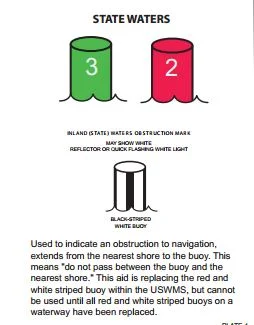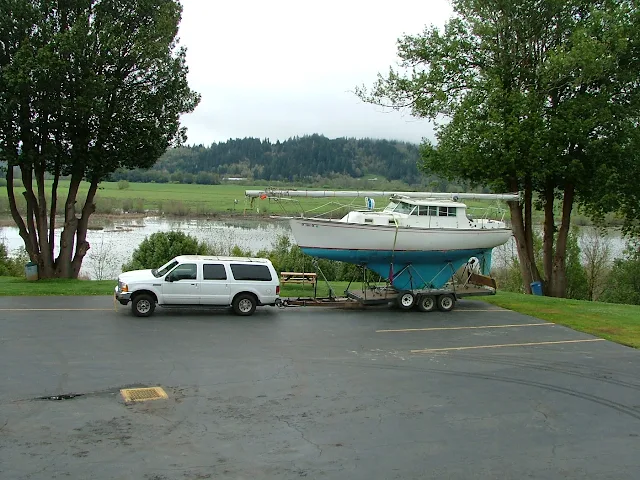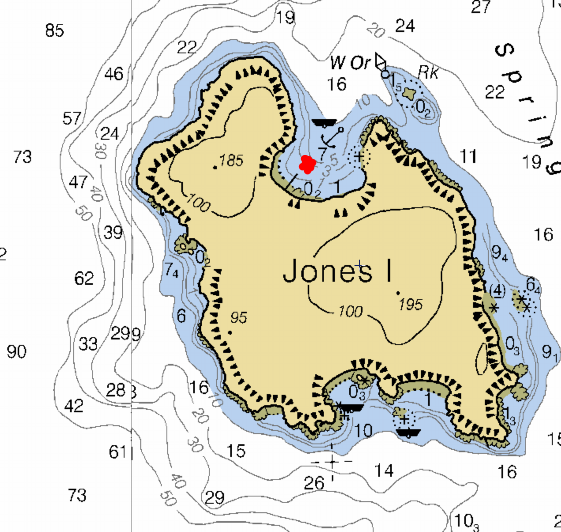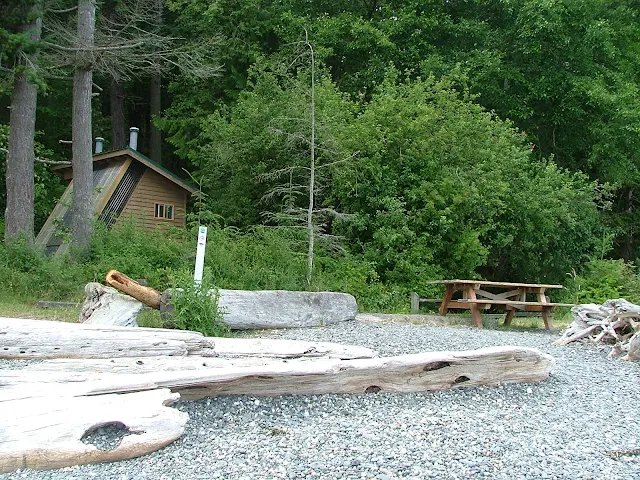1. Sailing Knife and Marlinspike
Carry a
knife and marlinspike on your belt at all times (not in your pocket, and
not down below in your bag). You need it ready to use in an instant. A
knife will cut through sailing rope or free a Genoa sheet wrapped around
your leg. The marlinspike helps pry open strands of rope for splicing.
Folding knives with a 3" blade and marlinspike are fine, but require two
hands to open and close. A better choice would be a straight blade,
rigging knife with a 3" blade and a separate marlinspike in a sheath.
Always,
always secure a knife with a lanyard to your belt. This keeps it
attached to you even if it slips out of your hands. This can be critical
if you have to go aloft or slip over the side with a rope wrapped
around your leg (this has happened more than once to sailing crews offshore!)
2. Personal Flotation Device (pfd) and Sailing Harness
Pack your own pfd and sailing harness. Do not rely on sailboat you
crew aboard to have a spare. Try on several inflatables and find one
that's easy to adjust and comfortable. Simulate sailing motions when you
put it on. Squat down, lean over, raise your arms above your head, and
pretend you are grinding on a sailing winch. It must hug your body and
give you comfort at all times; otherwise you will not wear it!
Purchase
a separate sailing safety harness. Better, find an inflatable pfd with
an integrated harness. Make sure it has oversize D-rings rated to a
breaking strength of at least 4,000 pounds. A separate harness should
mold to your body like a glove. Again, do not rely on the sailboat you
will board to provide you with a safety harness that fits your body.
Ask
the sailing skipper if there are tethers already onboard. The tether
attaches to your harness D-ring and then clips on to a jackline ( a long
piece of line or webbing that runs from bow to stern). If you need to
make your own, use webbing or three strand sailing rope. Make one tether
4' long and the other 6' long. Attach strong one-handed clips with a
breaking strength of at least 4,000 pounds to the end. Attach the other
end to the harness D-rings with an oversized snap-shackle. Attach a
lanyard to the snap shackle for quick-release, in case your tethers get
hung up and you need to shed them fast.
3. Caps and Hats
You
need protection from the sun, the cold, and rain. Double everything you
pack for cats and hats. You can expect to lose at least one hat over
the side on each trip. Pack two peaked caps, a good brim hat, like those
made by Tilley, and two or more knit watch caps. A good brim hat
provides more protection in the Tropics than slathering sunscreen on
your face and neck.
At nighttime, even in summer, the sea weather
will cool more than you ever thought possible. A good watch cap will
keep you warm. Those made by a company like Under Armour are microfibers
that breathe and provide comfort without sweating (which will cause
your body to cool!).
4. Foul Weather Gear
Pack a full
set of foul weather jacket and bib-pants. Match the jacket and pants to
the type of sailing. Use lighter gear for tropics and heavy gear for
cold weather passages. Go for the "breathable" type fabrics that protect
you, but allow air to circulate next to the skin to help lower
perspiration.Ask the sailing skipper if you should bring sea-boots.
5. Under Garments
Pack
thick, heavy socks to wear with sea boots. These protect your heels to
ward off blisters. Under layers should be considered part of any foul
weather gear offshore equipment. You need garments that wick the sweat
from the skin to keep you dryer and prevent cooling. In warm or cold
weather, go with the modern microfiber synthetics for superior comfort
beneath your foulies.
6. Sailing Gloves
Unless you
sail all the time, your hands will not be used to handling the sailing
ropes of synthetic material common on sailing yachts. These can cause
blisters or "rope burn", where the line runs out fast between your
hands, peeling away the skin.
Purchase full length sailing
gloves--also called "3/4 length"--that cover all except the tips of your
fingers. These offer the best protection when working sailing sheets,
halyards, and boat anchoring rode.
7.Oversized Plastic Freezer Bags
Crazy
as it sounds, zip-lock type bags are worth their weight in gold. Pack
10-20 of these. Use them to segregate clothes so you don't have to dig
in a bag (i.e. one for socks, one for underpants, one for t-shirts) Use
them for dirty clothes to cut down on odors. Seal wet clothes inside
until you have a chance to dry them. Fill them with valuables like your
wallet and cellphone. Zip up snacks inside for late night watches or
quick meals when it gets rough.
Make any zip-lock type bag more compact or keep foods fresh longer with these three easy steps:
1. Seal all except one half inch of the bag. Press as much air out of the bag as possible
2. Insert the straw into the opening. Seal the bag next to the straw with your fingers.
3. Suck on the straw to remove the rest of the air. Seal the bag as you withdraw the straw.
8.Personal Grab-Bag
If
you need to leave the boat in an emergency, you need one bag that you
can grab-and-go. Use one of your zip-lock bags for storage. Include your
wallet, keys, passport, visa, cellphone, a separate notepad with a list
of emergency contact names and phone numbers (this should include your
insurance policy # and phone numbers, doctors name and numbers, pharmacy
numbers), cash, travelers checks, and at least 10 days of medications.
9.Seasick Medications
Pack
some form of seasick prevention for any offshore trip. More than 66% of
all sailors experience some form of seasickness (mild to severe) in
rough weather. You must be able to stand watches, help with sail changes
or reefing, and work with the sailing crew, even when you aren't
feeling your best.
Use the mildest type of seasick remedy that
gives the maximum effect. Start with natural, non-medication forms of
seasick prevention (ginger, emotional freedom technique (EFT),
wrist-pressure bands). Next, consider over-the-counter types of
medication. If necessary, use prescription medications.
Check with
your doctor before taking any type of seasick medication--even the
natural forms. Each individual has a different body chemistry, and you
want to be on the safe side. Start your medication at least 24 hours
before you set sail so that it will be in your bloodstream before you
leave the pier. Keep hydrated at all times to lessen the onset of
seasickness.
10.Hand and Head-band Lights
Carry your
own flashlight. Buy one of the small high-intensity lights that come in a
sheath. Look for those with pop-on, pop-off red filters. You need red
filters to keep your night vision in tact. In addition, purchase a
head-band type light with the same features--high intensity white light
with a toggle for red filtered light.
Use the head-band light for
hands free chart navigation, engine space maintenance, and to check sail
trim at night. Pack at least three changes of batteries for each type
of light. Buy a plastic soap dish, place the batteries inside, and strap
them shut with heavy-duty rubber bands.
Use these ten sailing
tips to know the absolute essentials you need to pack for any offshore
sailing trip. You will be able to enjoy your time underway worry-free,
with the knowledge that you are ready for whatever comes you way!
================
Courtesy of: Captain John teaches sailing skippers the
skills they need to learn to sail like a pro! Get his popular free
report "Ten Top Boat Safety Checks for Cruising Boat Skippers" at
Learn to Sail at Skippertips.com.
John
offers a free weekly sailing tips newsletter. Join his site to learn
hundreds of little-known sailing tips and techniques with articles,
videos, and live sailing forums at
Learn to Sail at Skippertips.com.



































